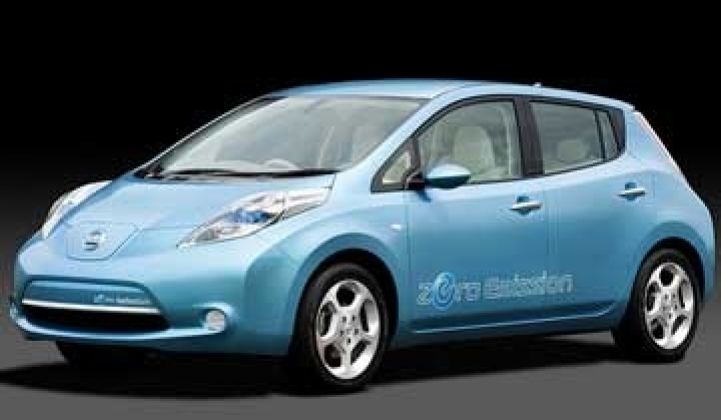The Networked Grid conference kicks off today in Indian Wells, Calif. Before panels delve into everything from potential killer apps to EV integration over the next two days, Rick Thompson, president and co-founder of Greentech Media, and David Leeds, smart grid analyst for GTM Research, offered their insight on larger trends to watch this year in smart grid.
1. Consumer Awareness and Engagement
Everyone knows about the AMI troubles in California and Texas, but those utilities are not alone in needing to work on their people skills. Leeds noted that Duke Energy recently canvassed 70,000 customers about signing up for a new energy savings program. The result: Just 20 people signed up. “It’s an extraordinary task in front of us,” said Leeds. "Making the customer smart is as important as making the grid smart."
- Utilities, which are essentially monopolies, are in a “reactive stage” in terms of engaging customers, but that is beginning to change.
- Pacific Gas & Electric launched a dedicated call center with 165 service reps.
- Baltimore Gas & Electric is putting $50M of its $500M smart grid project into education and marketing.
- Except to see more transparency from utilities as they roll out AMI and time of use pricing. “Time of use pricing could be a war if you don’t start in the right direction,” said Leeds.
2. Realizing the Network Infrastructure Foundation
Building out advanced metering infrastructure will not be enough, said Thompson.
- Distribution automation will be a critical application.
- Despite the focus on physical layer networking “religion” arguments, they are misguiding the industry, said Thompson. “It’s not going to be one or the other; it’s going to be all of them,” depending on applications and service area requirements.
- Sixty-three percent of utilities polled said that demand response/HAN enablement was the primary purpose for deploying end-to-end communication network, while 60 percent said distributed automation/ grid optimization was one of the primary purposes.
3. Growth of Electric Vehicles
“We’ve got a tail that’s wagging the smart grid dog,” Leeds said about EVs, which are scheduled to hit the market this year.
- The Nissan Leaf is expected to enter the market at about $25,000 after tax credits, making the economic argument in favor of EVs clear to many consumers.
- The Leaf is equal to or greater than any summer peak house load.
- There will be a critical need for off-peak charging if EVs are going to come onto the grid without overwhelming it.
- The Chevy Volt will be 240 V/ 15A, the Nissan Leaf will be 240 V/30A, and California is expecting upwards of one million EVs by 2020; therefore, utilities need to think about the integration of EVs as part of a larger capital improvement project.
4. Convergence of Smart Grid and PVs
Power generation (driven by distributed PV) is moving from a centralized to a distributed architecture, said Thompson, bringing unanswered questions about how that distribution will affect the grid.
- Annual PV demand is expected to jump from about 12,000 MW in 2011 to nearly 18,000 MW in 2013, according to GTM Research.
- Some circuits are already facing more than 20 percent distributed penetration. “No one really knows the breaking point,” said Thompson.
- Microinverter companies are expanding, exploring home gateway and communication networking opportunities.
5. Growth of Demand Response
Demand response is the first killer app of smart grid, said Leeds, with Barclays estimating it will be a $20 billion industry by 2020.
- PJM announced nearly 10 GW of demand response from the most recent capacity auction for 2013/2014, an increase of 32 percent over the last year.
- Demand response will continue to shift to the retail markets and is still in the early days on the residential side.
- Seventy-one percent of utilities said reduction peak demand was a top benefit of smart grid.



